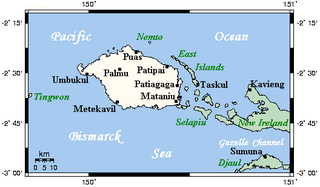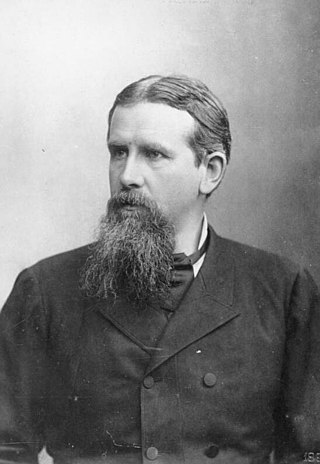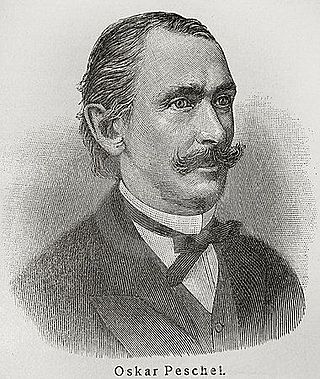Related Research Articles

In Māori mythology, Rehua is a very sacred personage, who lives in Te Putahi-nui-o-Rehua in Rangi-tuarea, the tenth and highest of the heavens in some versions of Māori lore. Rehua is identified with certain stars. To the Tūhoe people of the North Island he is Antares. Others say he is Betelgeuse, or Sirius. Because he lives in the highest of the skies, Rehua is untouched by death, and has power to cure blindness, revive the dead, and heal any disease. He is a son of Rangi and Papa, and the father of Kaitangata, as well as the ancestor of Māui. A Ngāi Tahu legend from the South Island speaks of Rehua as the eldest son of Rangi and Papa, who first manifested as lightning, but assumed human shape when he travelled into the skies. Later his brother Tāne went to pay him a visit, Rehua had birds in his hair, feeding on his lice. Rehua had his servants cook and prepare the birds as a meal for Tāne, who was shocked and declined to eat them because the birds had eaten the lice from Rehua's head, which was extremely tapu (sacred). However Rehua gave him birds to bring down to this world, and showed him how to snare them. Tāne also brought with him the fruit trees that the birds fed on, and so it is that there are forests and birds on the earth.
Tangaroa is the great atua of the sea, lakes, rivers, and creatures that live within them, especially fish, in Māori mythology. As Tangaroa-whakamau-tai he exercises control over the tides. He is sometimes depicted as a whale.
Atua are the gods and spirits of the Polynesian peoples such as the Māori or the Hawaiians ; the Polynesian word literally means "power" or "strength" and so the concept is similar to that of mana. Today, it is also used for the monotheistic conception of God. Especially powerful atua included:
Atea is a deity in several Polynesian cultures, including the Marquesas and Tuamotu Islands, and New Zealand.
Fijian mythology refers to the set of beliefs practiced by the indigenous people of the island of Fiji. Its gods include Degei, a serpent who is the supreme god of Fiji. He is the creator of the (Fijian) world. He judges newly dead souls after they pass through one of two caves: Cibaciba or Drakulu. A few he sends to paradise Burotu. Most others are thrown into a lake, where they will eventually sink to the bottom (Murimuria) to be appropriately rewarded or punished.
In pre-Christian Fijian mythology, Murimuria is part of the underworld. According to Fijian religion, after a man dies, his soul is brought over a stretch of water by a ferryman, and has to face many dangers on the other side by going through the Path of the Souls. For unmarried men, there seems to be no chance of surviving this path, because even if they escape the Great Woman, they would be killed by the monster Nangganangga, since no one ever got away from it, while married men could survive, if they withstand the Pandanus tree and the armed giant Killer of Souls. The survivors are judged by the god called Degei. Those who had the favor of Degei are instructed not to try to cross the lake. These go to Burotu. The rest inevitably try cross the lake by a boat that always capsizes. They eventually sink to the bottom, Murimuria, and are rewarded and punished appropriately.

New Hanover Island,, also called Lavongai, is a large volcanic island in the New Ireland Province of Papua New Guinea. This region is part of the Bismarck Archipelago and lies at 2.5°S 150.25°E. Measuring some 460 square miles (1,200 km2), it had a population of 5,000 in 1960, which increased to approximately 17,160 by 2000.

Friedrich Ratzel was a German geographer and ethnographer, notable for first using the term Lebensraum in the sense that the National Socialists later would.

The Motu are native inhabitants of Papua New Guinea, living along the southern coastal area of the country. Their indigenous language is also known as Motu, and like several other languages of the region is an Austronesian language. They and the Koitabu people are the original inhabitants and owners of the land on which Port Moresby — the national capital city — stands. The largest Motu village is Hanuabada, northwest of Port Moresby.

Tapa cloth is a barkcloth made in the islands of the Pacific Ocean, primarily in Tonga, Samoa and Fiji, but as far afield as Niue, Cook Islands, Futuna, Solomon Islands, Java, New Zealand, Vanuatu, Papua New Guinea and Hawaii. In French Polynesia it has nearly disappeared, except for some villages in the Marquesas.

Straw plaiting is a method of manufacturing textiles by braiding straw and the industry that surrounds the craft of producing these straw manufactures. Straw is plaited to produce products including straw hats and ornaments, and the process is undertaken in a number of locations worldwide.
The Kulturkreis school was a central idea of the early 20th-century German school of anthropology that sought to redirect the discipline away from the quest for an underlying, universal human nature toward a concern with the particular histories of individual societies. It was the notion of a culture complex as an entity that develops from a centre of origin and becomes diffused over large areas of the world.
Qat is the principal god in the oral mythology of the Banks Islands, a small archipelago of northern Vanuatu, Melanesia.

Fais Island is a raised coral island in the eastern Caroline Islands in the Pacific Ocean, and forms a legislative district in Yap State in the Federated States of Micronesia. Fais Island is located approximately 87 kilometres (54 mi) east of Ulithi and 251 kilometres (156 mi) northeast of Yap and is the closest land to Challenger Deep, about 180 miles away.

Meke, in the Fijian language, is all traditional style of dance. It is a cognate of the words "maka" (Rotuman) and "mele" in Hawaiian. It is typically performed during celebrations and festivals. Traditionally the dances that comprise the meke art form are performed by groups of men only or women only, however, foreign influences, such as the male/female Tongan ma'ulu'ulu becoming the Fijian vakamalolo, are evident throughout.

Religiously, Fiji is a mixed society with most people being Christian, with a sizable Hindu (27.9%) and Muslim (6.3%) minority, according to the 2007 census. Religion tends to split along ethnic lines with most Indigenous Fijians being Christian and most Indo-Fijians being either Hindu or Muslim.
In Māori tradition, Tāwhirirangi was one of the great ocean-going, voyaging canoes that was used in the migrations that settled New Zealand. Tāwhirirangi was captained by Ngāhue, and originally landed in the Bay of Plenty before heading to the South Island. Ngāhue is said to have then discovered pounamu.
The Calchaquí or Kalchakí were a tribe of South American Indians of the Diaguita group, now extinct, who formerly occupied northern Argentina. Stone and other remains prove them to have reached a high degree of civilization. Under the leadership of Juan Calchaquí they offered a vigorous resistance to the first Spanish colonists coming from Chile.

Oscar Ferdinand Peschel was a German geographer and anthropologist.
According to ancient Hawaiian myth, Milu is the god of the dead and ruler of Lua-o-Milu. He is now thought to share analogs with Hades. Under his command, are a host of beings known as spirit catchers who would trap wandering ghosts and bring them to his afterlife domain. In one legend, a chief harrowed of the loss of his wife, has his prayers answered and receives guidance from a deity who shows him the way into Milu's kingdom. They journey far out and find a tree split in two. Next they slide down it into the Earth's lower regions. Here, the deity hid behind a rock and covered the chief with odd smelling oil then sent him out by himself. Once the chief found Milu's palace, he noticed a group of spirits who were so distracted in the game they were playing, he was able to join, and luckily, when they did realize he was near them, they mistook him for a stinking ghost. When the crowd was finished, they wanted to play another game, hence the chief proposed they should all pull their eyes out and paid his attention to those belonging to Milu. He later caught them in a coconut cup and blinded the god. Now he was able to escape to Wākea's heaven, where the Underworld's inhabitants could not set foot. Eventually a deal was made and Milu's eyes were returned, on the condition that the chief's wife's soul be brought back.
References
- ↑ King and People of Fiji (The Pasifika Library) (Paperback) ( ISBN 0824819209 , 0-8248-1920-9)
- ↑ John Freese, The Philosophy of the Immortality of the Soul and the Resurrection of the Human Body. Facsimile reprint of 1864 edition. Kessinger Publishing, 2005, ISBN 1-4179-7234-3.
- ↑ T. Williams, J. Calvert, Fiji and the Fijians, Heylin, 1858.
- ↑ Myths & Legends of Fiji and Rotuma by A.W. Reed and Inez Hames
- ↑ Friedrich Ratzel, The History of Mankind. (London: MacMillan, 1896) Vol 1 Page 317. URL: www.inquirewithin.biz/history/american_pacific/oceania/melanesian-gods.htm See this page. Archived 2011-07-06 at the Wayback Machine Accessed 9 June 2010.
- ↑ Ratzel, Friedrich. The History of Mankind. (London: MacMillan, 1896). URL: www.inquirewithin.biz/history/american_pacific/oceania/melanesian-tattooing.htm Archived 2011-07-06 at the Wayback Machine accessed 21 October 2009.
- ↑ R.A. Derrick